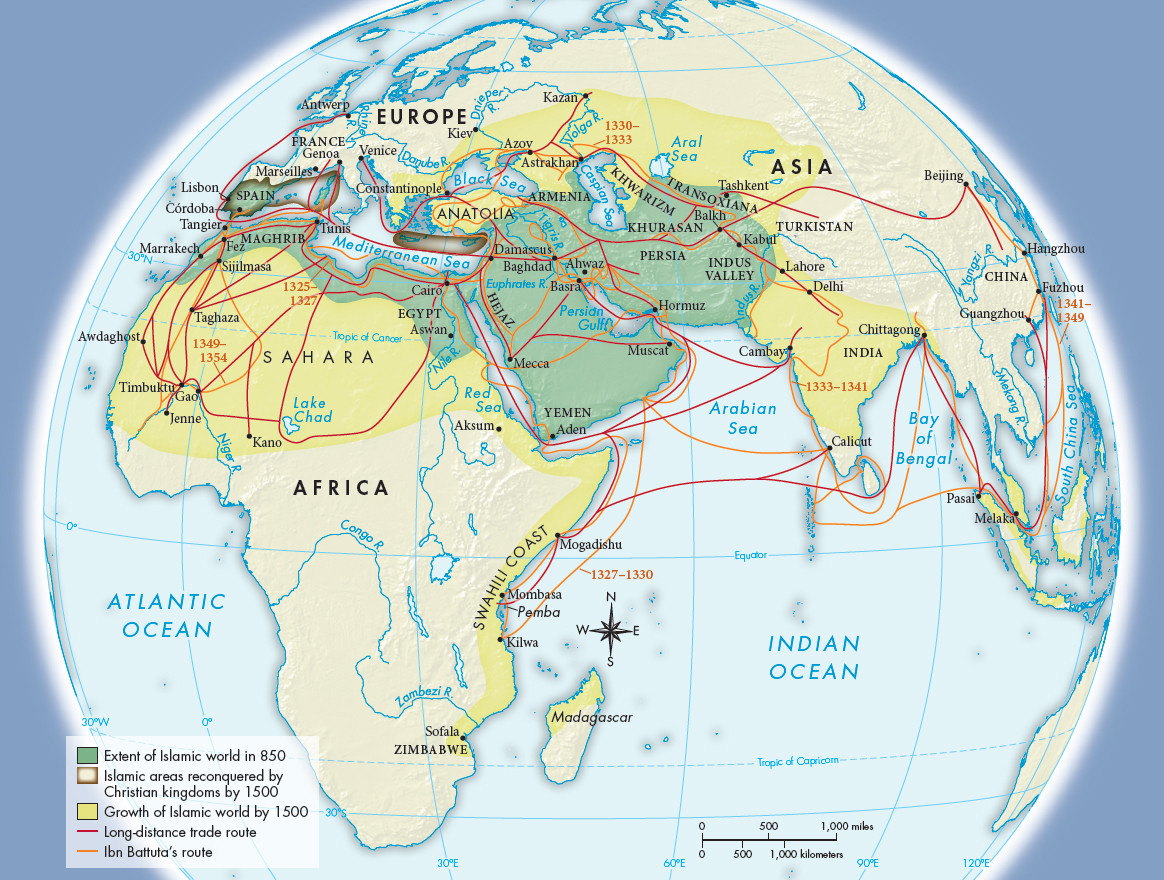Why did trade thrive in Muslim lands?
UUnlike the Christian West or the Confucian East, Islam looked favorably on profit-
Waterways served as the main commercial routes of the Islamic world (Map 9.2). They included the Mediterranean and Black Seas; the Caspian Sea and the Volga River, which gave access deep into Russia; the Aral Sea, from which caravans departed for China; the Gulf of Aden; and the Arabian Sea and the Indian Ocean, which linked the Persian Gulf region with eastern Africa, the Indian subcontinent, and eventually Indonesia and the Philippines.

Cairo was a major Mediterranean entrepôt for intercontinental trade. Foreign merchants sailed up the Nile to the Aswan region, traveled east from Aswan by caravan to the Red Sea, and then sailed down the Red Sea to Aden, where they entered the Indian Ocean on their way to India. They exchanged textiles, glass, gold, silver, and copper for Asian spices, dyes, and drugs and for Chinese silks and porcelains. Muslim and Jewish merchants dominated the trade with India, and all spoke and wrote Arabic. Their commercial practices included the sakk, an order to a banker to pay money held on account to a third party. Muslims also developed other business innovations, such as the bill of exchange, a written order from one person to another to pay a specified sum of money to a designated person or party, and the idea of the joint stock company, an arrangement that lets a group of people invest in a venture and share its profits (and losses) in proportion to the amount each has invested.
Trade also benefited from improvements in technology. The adoption from the Chinese of the magnetic compass greatly helped navigation of the Arabian Sea and the Indian Ocean. The construction of larger ships led to a shift in long-
In this period Egypt became the center of Muslim trade, benefiting from the decline of Iraq caused by the Mongol capture of Baghdad and the fall of the Abbasid caliphate (see “The Mongol Invasions”). Beginning in the late twelfth century Persian and Arab seamen sailed down the east coast of Africa and established trading towns between Somalia and Sofala (see “The East African City-States” in Chapter 10). These thirty to fifty urban centers linked Zimbabwe in southern Africa with the Indian Ocean trade and the Middle Eastern trade.
One byproduct of the extensive trade through Muslim lands was the spread of useful plants. Cotton, sugarcane, and rice spread from India to other places with suitable climates. Citrus fruits made their way to Muslim Spain from Southeast Asia and India. The value of this trade contributed to the prosperity of the Abbasid era.
>QUICK REVIEW
How did Islamic political and religious leaders view trade and commerce?